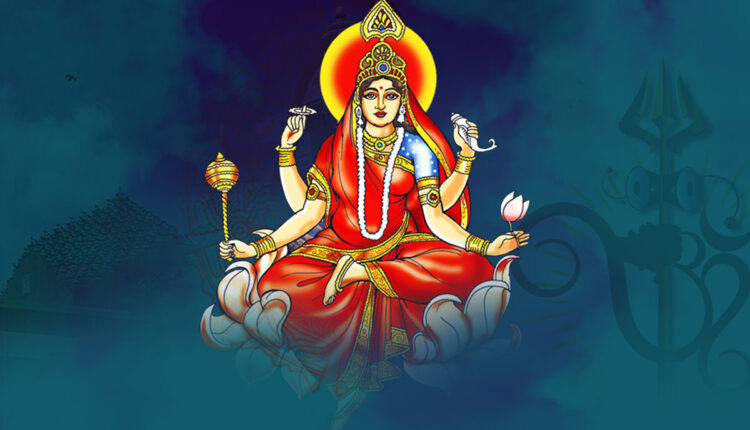The Nine Facets of Devi Durga: Know About Goddess Siddhidatri
Goddess Siddhidatri: The Bestower of Supernatural Powers and Spiritual Enlightenment
Goddess Siddhidatri is the ninth and final form of Durga worshiped during Navratri. Her name, “Siddhidatri,” means “the giver of siddhis,” or supernatural powers. She is revered for her ability to bestow spiritual knowledge, wisdom, and the eight siddhis, which are divine powers mentioned in ancient texts. Siddhidatri’s divine presence symbolizes the culmination of the spiritual journey, representing the attainment of ultimate perfection and enlightenment. Devotees seek her blessings for the fulfillment of both spiritual and material desires, and her worship on the ninth day of Navratri is considered the final step toward liberation and self-realization.
Mythological Significance of Goddess Siddhidatri
In Hindu mythology, Siddhidatri is regarded as the supreme goddess who bestows supernatural abilities and fulfills the spiritual aspirations of her devotees. The eight siddhis that she grants include:
- Anima: The power to become very small.
- Mahima: The power to become large in size.
- Garima: The power to become heavy.
- Laghima: The power to become light.
- Prapti: The ability to obtain anything.
- Prakamya: The power to fulfill desires.
- Ishatva: The power to control nature.
- Vashitva: The power to control others.
According to ancient legends, it is believed that when the universe was first created, Lord Shiva attained these siddhis through the grace of Goddess Siddhidatri. It is also said that Siddhidatri sits at the center of the universe, surrounded by all the gods, offering them these divine powers to help maintain the balance of creation.
The Form and Symbolism of Goddess Siddhidatri
Goddess Siddhidatri is depicted in a seated posture on a lotus, symbolizing her divine grace and peaceful demeanor. She has four arms, holding a lotus flower, a mace, a conch shell, and a discus. Each of these items represents a different aspect of her divine power:
- The lotus signifies spiritual awakening and purity.
- The mace (gada)symbolizes authority and strength.
- The conch shell (shankha)represents the eternal sound of the universe, Om, symbolizing spiritual knowledge.
- The discus (chakra)stands for the destruction of ignorance and evil forces.
She is often shown sitting on a lotus or a lion, symbolizing her connection with nature and her ability to bestow both material and spiritual wealth. Her serene expression reflects her role as a compassionate mother who blesses her devotees with knowledge, wisdom, and supernatural powers. Siddhidatri is associated with the Sahasrara Chakra, the crown chakra, which is considered the highest point in spiritual consciousness. By meditating on this chakra while worshiping Siddhidatri, devotees seek to achieve spiritual enlightenment, ultimate freedom, and the experience of union with the divine.
Support Independent Journalism? Keep us live.
Spiritual Importance of Worshiping Goddess Siddhidatri
Worshiping Goddess Siddhidatri on the ninth day of Navratri holds great spiritual significance. As the goddess who grants the eight siddhis, she helps her devotees overcome ignorance, leading them to spiritual wisdom and self-realization. Her blessings are believed to bring about a deep sense of fulfillment, allowing individuals to transcend the material world and realize their highest potential.
Siddhidatri is also seen as the embodiment of compassion and grace, granting her devotees not only supernatural powers but also spiritual knowledge and wisdom. Through her divine energy, devotees gain clarity and insight, enabling them to achieve their goals and desires while remaining grounded in spiritual values.
The ultimate purpose of worshiping Siddhidatri is to reach the pinnacle of spiritual awakening and to experience the oneness of the individual soul with the universal consciousness. Her presence reminds devotees that the journey of Navratri, starting from physical strength and ending with spiritual wisdom, leads to ultimate liberation and peace.
Rituals and Offerings to Goddess Siddhidatri
On the ninth day of Navratri, devotees begin their day with a ritual bath and wear clean, fresh clothes. The color associated with the ninth day is purple, symbolizing ambition and power. Special prayers and pujas are performed in honor of Goddess Siddhidatri, asking for her blessings of wisdom and spiritual growth.
Offerings made to Siddhidatri include fruits, flowers, particularly red roses, and sweets, which are said to please the goddess. Devotees light lamps, incense, and chant the Siddhidatri Stotra, along with other mantras, to invoke her divine presence. Fasting is also a common practice on this day, as it is believed to purify the mind and body and increase devotion to the goddess.The culmination of the nine-day Navratri festival is marked by the worship of Siddhidatri, representing the completion of the spiritual journey. Her grace brings clarity, peace, and the ultimate realization of one’s spiritual purpose.
Goddess Siddhidatri, the ninth form of Devi Durga, embodies wisdom, spiritual knowledge, and the power to grant supernatural abilities. As the final form worshiped during Navratri, she represents the culmination of the spiritual journey, guiding devotees toward self-realization and enlightenment. Through her blessings, devotees gain the ability to overcome ignorance, achieve their spiritual goals, and experience the ultimate union with the divine.
Worshiping Siddhidatri on the ninth day of Navratri is a time to reflect on the spiritual progress made throughout the festival and to seek her blessings for wisdom, fulfillment, and inner peace. As the giver of siddhis, Goddess Siddhidatri’s divine presence brings both material and spiritual rewards, helping devotees reach the pinnacle of their spiritual journey.


Comments are closed.